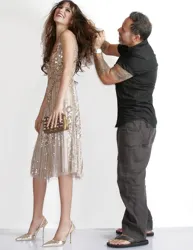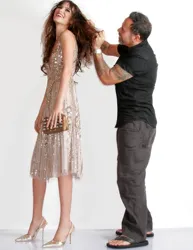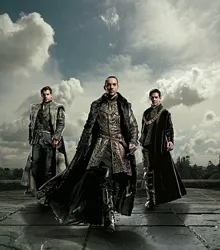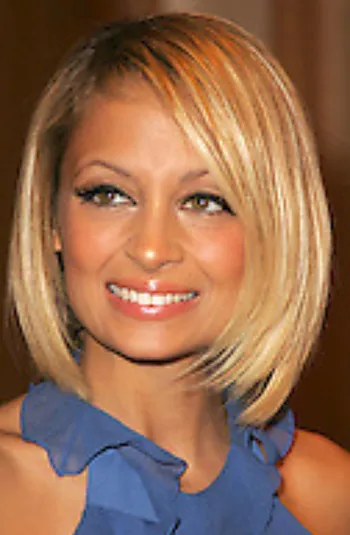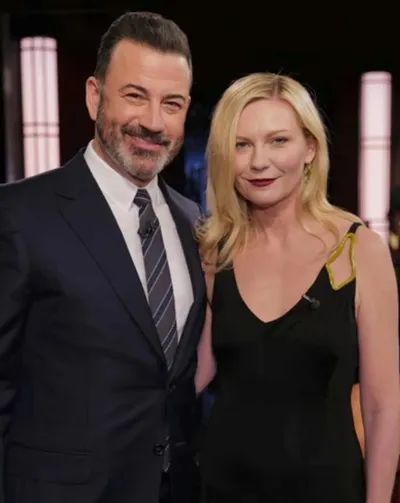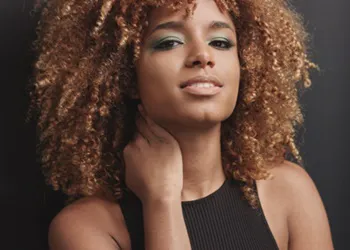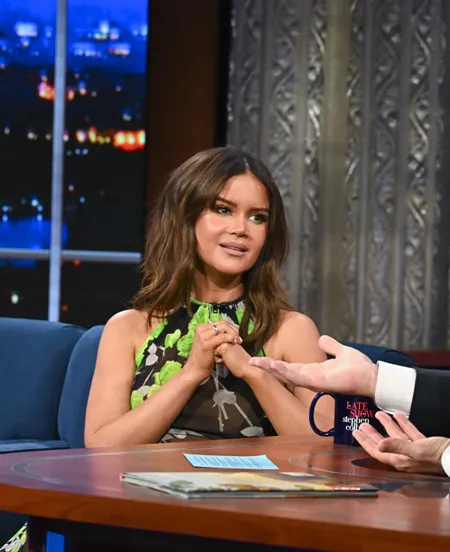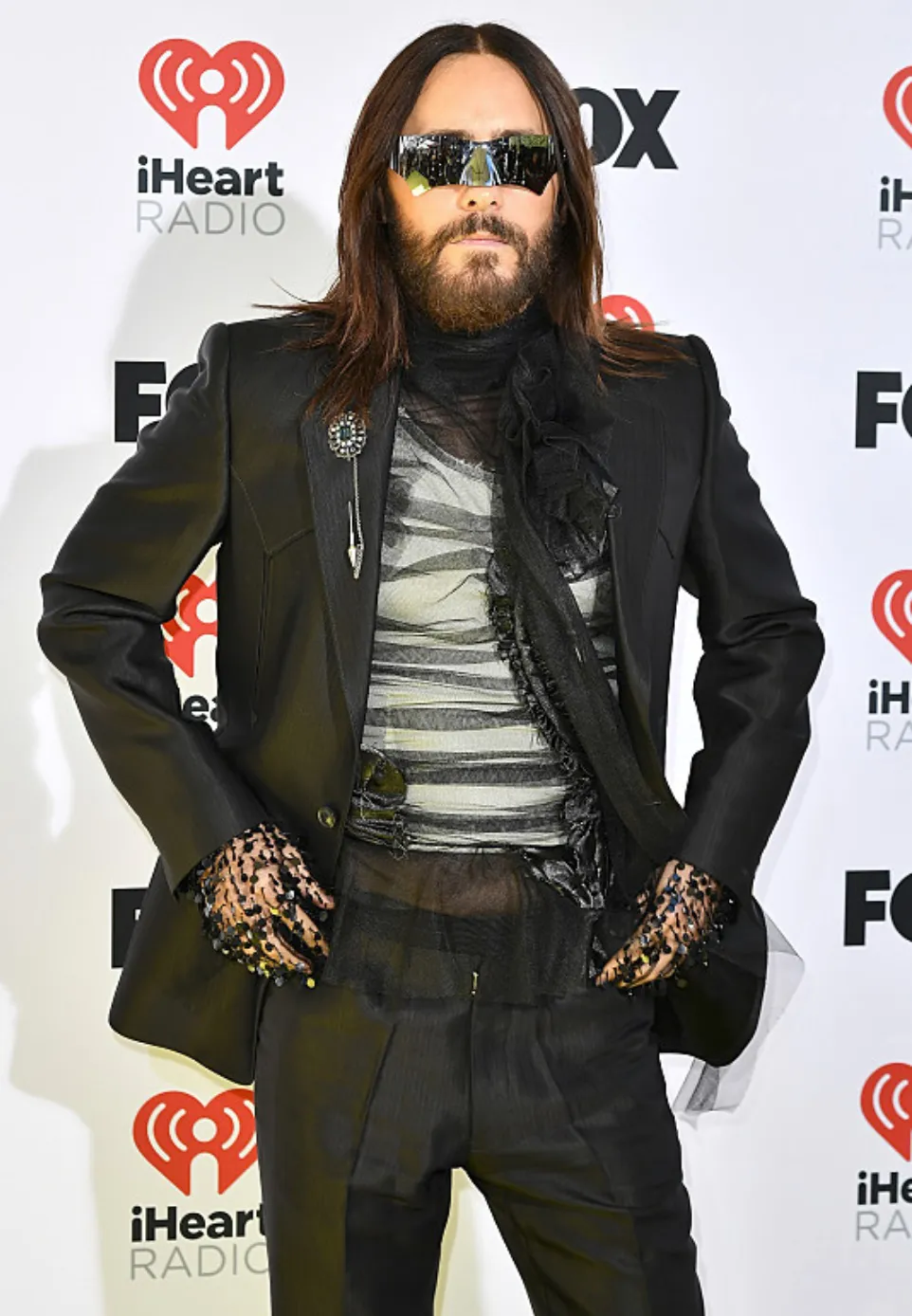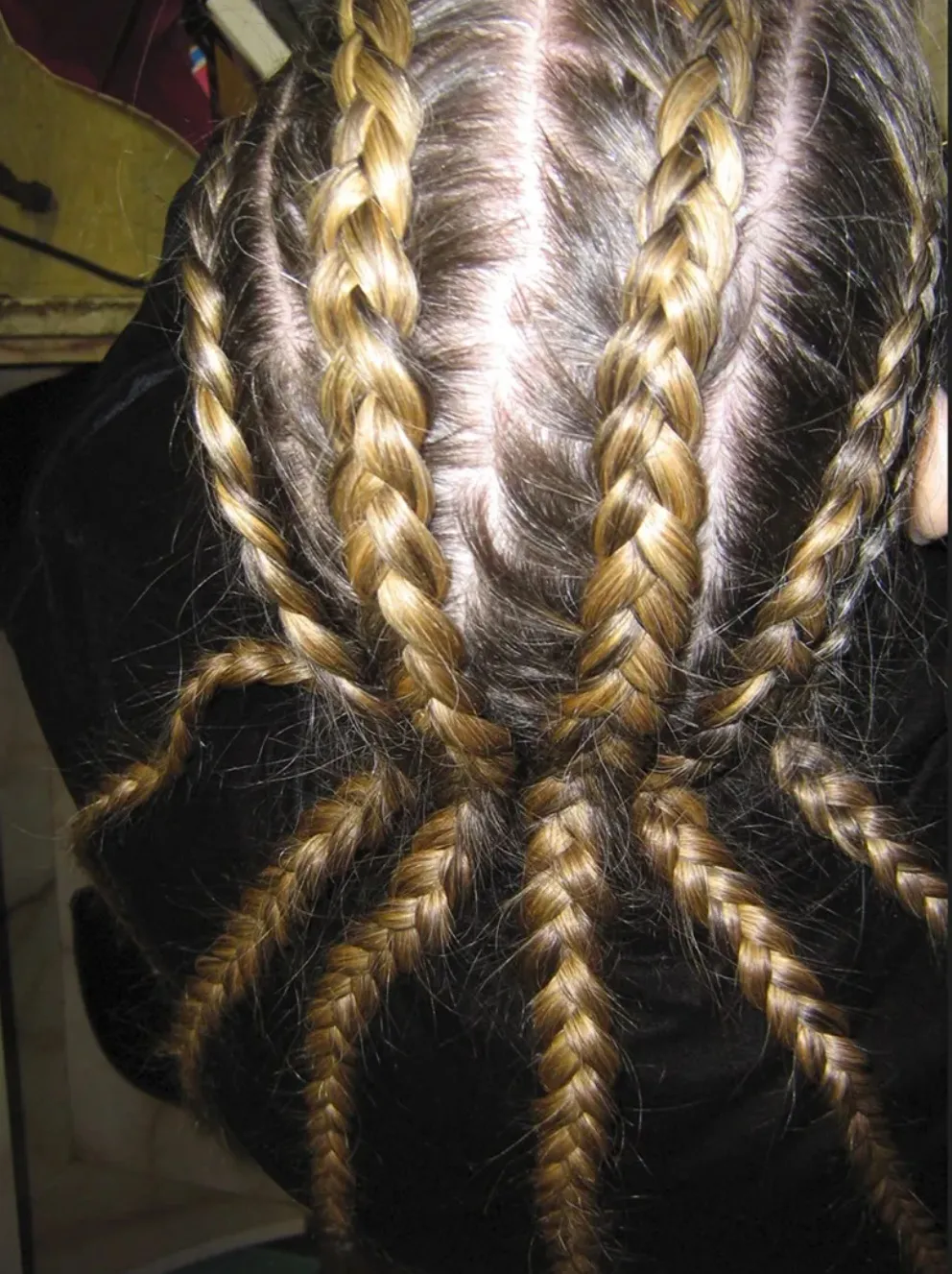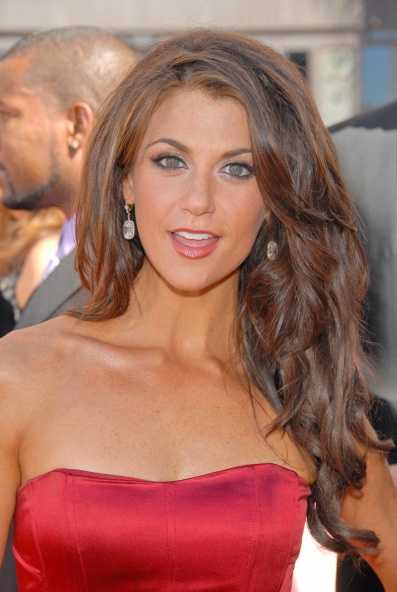
An Interview With Hair Master - Henry Amador
IntroductionAlthough I interviewed Henry a few months ago, somehow the recent re-launching of The Hair Boutique got in the way of publishing our conversation. I must apologize to Henry for taking so long to get his excellent interview published and thank him for his understanding of our delays. I have to tell you that Henry was fantastic. Throughout the entire interview he was very patient with me and willing to spend as much time as I needed to get all my questions answered. I was on the edge of my seat for the entire interview. I discovered that Henry really has his pulse on the hair industry. He gave me some incredible insights into what to expect as we move into the year 2000 and beyond. Note: Be sure to see Henry's Interview - Part Deux that was published in the Fall of 2001 at HairBoutique.com. Also, Henry is the inventor of a unique, one-of-a-kind hair coloring technique that is closer to a Master's work of art than just about anything else. After Henry explained how he makes a quilt of colors that is woven into a client's hair I was ready to sign up for his next quilt making session. Meet Henry Amador
I was very excited about the opportunity to interview Henry because I had previously read about his one-of-a-kind color quilting techniques and his innovative hairstyling methods. Henry is a master stylist and colorist who has paid his dues in the hair care industry over the past several years. In previous times Henry has been a very popular platform hair artist who would perform at many of the big hair industry shows like IBS. Henry has shifted his focus away from the platform shows and hair industry events for a focus directed towards consumers. Henry believes strongly in getting his message directly to the people. As Henry explained, the real need and challenge in the hair care industry of 1999 - 2000 is to directly serve the public. Although Henry is an expert in all areas of hair care, he is a master colorist Henry has been affiliated with some of the best in the hair care industry. In the past he was an assistant for some famous hairdressers like Leland Hirsh (founder of ARTec). Although in the past Henry has served in a variety of roles from platform artist to creative director, he is currently splitting his time between doing editorial work like the shoot he did with Gregory Paul and weaving his hair magic on his clients in his South Florida location. Uniqueness Is Very Hot
The most significant thing that Henry told me about the hair care industry was that "individuality is where its at". The number one thing happening in the hair industry today (and will continue to happen) is "a great push for complete originality". Consumers are no longer willing to wear their hair a certain way because the hair industry tells them that they should. How true. I know from my own personal experiences in dealing with Hair Boutique visitors that everyone wants to have a hairstyle that is truly theirs and theirs alone. Uniqueness and independence in 1999/2000 have become just about the most important factor to many people when they select a hairstyle. Henry explained that the hot interest in having a unique, can't be copied look, is one part of the reason that he created his "hair color quilting" technique. With Henry's pattern of creating one-of-a-kind quilts of color his customers can have a look that no one can easily copy. Making A Quilt Out Of Hair Color
Henry literally makes a quilt of colors that he weaves like a master artist into a client's hair. (Style to the side created by Henry Amador, photographed by Gregory Paul) Henry spent a lot of time explained his quilting technique and by the end of the explanation I was ready to have my hair turned into a color quilt. As Henry explained it, the fact that a series of interlocking squares have been colored into a client's hair is not obvious to anyone looking at the hair with an untrained eye. What Henry does is lay out a pattern of color squares within a series of bigger squares that when all put together gives the hair incredible depth, richness and gorgeous colors. To an uninformed observer the hair will appear to have many layers of dimension, shine and hue. The quilting process results in hair that is exciting, unusual and one-of-a-kind. Each quilt takes on its own outcome and can never be duplicated to look exactly the same. The outcome of every color quilt depends on the range and shades of colors that the clients chooses to have woven into the eventual outcome. For the most part, Henry stays within a certain range of colors and shades. Henry carefully creates the quilted color patterns using a very complex and intricate web of colors that are applied to the hair and then wrapped in foils for varying time periods. Although Henry generally follows a family of colors and shades, sometimes he has clients that want something totally bold, outrageous or geometric. For those clients Henry creates color quilts that are very unusual and exciting that really stand out. Henry explained that he currently has one client that loves his custom color quilt that consists of alternating chunks of black and very light blonde shades in quilted blocks. As you may imagine, Henry puts a lot of thought and planning into the creation of every color quilt that he weaves for a client before he actually adds the colors. Henry finds each quilt to be completely different from any other quilts that he has done. This offers Henry a constant challenge with his color art. Henry is truly an artist paint an incredible masterpiece of colors and shapes on hair. Each quilt is a work of true craftsmanship and art. The good news is that almost no one can get the same look. The bad news is that is also impossible for Henry to completely recreate the look ever again. Although he can do touch ups, the next quilting will always be just a little different, just like any work of art. Henry told me that his clients are always very excited with the quilted results because is a custom work of art that has been created just for the client on their hair. It also is uniquely theirs based on their own hair color as the starting point for the quilt. Henry's quilting technique has received a lot of press coverage because it is so unusual and wonderful and innovative. The color quilting technique was featured in Modern Salon and American Salon to name just a few of the magazines that covered Henry's incredible technique. Color Quilting On Long HairAfter hearing Henry describe his incredible quilting process I asked him if color quilting was limited to short of medium length hair. I was curious if someone with hair as long as mine could also get good results from color quilting. Henry said that color quilting can be done on any length of hair from short to long. For long hair Henry said that he would adjust the size of the squares he used to make sure that he got full coverage on the entire length of the hair. Henry told me that not only does he use a pattern of squares but he may use all sorts of shapes from circular shapes to triangles to get the right look to the color quilts. Henry said that he takes many things into consideration when creating his quilts from face shape to hair texture and length to the client's lifestyle. Although most people can successfully have the quilting done to their hair, it may never be right for everyone depending on their circumstances. Leaders Are Always CopiedHenry and I talked about how it is a common event for innovators in the hair care industry to instantly be copied. I agreed with Henry and told him about how The Hair Boutique also experiences this phenomena where a lot of our site features are often copied by other hair Web sites. With his pattern of creating a custom quilt of colors on each of his clients, there is no way that anyone can easily or exactly copy his quilting techniques. Consequently Henry's clients have a very individualistic look that they love. As Henry pointed out, consumers want to follow the innovators and not the copycats. Henry is a big believer in honoring the client's need to wear their hair they way that they want to. Henry explained that the current trend and need to be totally individualistic eliminates "in" hairstyles like years ago. While some styles, like the Rachel, will be popular with some people, for the most part, people are looking for their own style. They want a style that is theirs and theirs alone. Henry agreed that some people still want to follow trends of the celebrities like Pamela Anderson Lee or Rene Russo, but mostly they want to "do their own thing". Henry pointed out that the entire hair care industry is changing because of this new independent consumer attitude about their hair. he hair care industry is definitely not like it used to be where the consumer wore their hair the way that the industry dictated. Stylists that are not willing to honor a client's need to be different or wear their hair the way they want to, will start to lose customers. The Days Of Industry Stars Are Ending
While there are still big name stylists, they are moving towards the line of "all clients are different and have different hair care needs". (Style to the side created by Henry Amador, photographed by Gregory Paul) Hair care consumers are becoming very empowered. Part of this is because of the Web which provides information to people willing to search for it. Part of it is that clients won't let anyone tell them what to do or how to look. Henry agreed that the same thing is true about long hair. It used to be true that the hair and beauty industry would tell certain age groups that they were forbidden to wear long hair. Consumers have responded by balking at these old rules and ignoring them completely. Now long hair is very popular on all age groups because people see it as an individual look and style. Long hair is also seen as exciting and very individualistic. The need to be unique has also brought back an interest in curly hair, both natural and permed. Consumers want to honor their own look and curly haired consumers are honoring their natural curls. In days past, consumers would buy into the need to straighten curly hair. Now they want to wear it natural and show off their curls. Henry said there really are no hard and fast hair trends. However he did say that the closest thing to a hair trend for 1999-2000 is an interest in either really long or really short hair that has an 80s feel, as well as individualistic bold colors and styles. He pointed out that spiked hair and unusual colors just add that element of uniqueness. Long hair is also considered unique or special in some way and that explains its current popularity. Favorite ProductsI put Henry on the spot by asking him what hair care and color products he preferred to use. Always the perfect diplomat, Henry explained that he is loyal to all the product lines because each one of them has something different to offer. In the past Henry has worked with Clariol's professional color line for salons. Currently Henry uses Wella colors. I asked Henry is there was a lot of difference between the different hair color lines and he said that all have their own unique qualities and they are all good. He said that he likes all of the products. Henry told me that some of the products make slightly different shades that may be lighter or darker than the competition. He told me that once you work with the colors you learn their slight differences. I asked Henry about one of my favorites, ARTec Textureline, and he did agree that ARTec has a great product line. Henry explained that in the past he had the opportunity to work for the founder of ARTec, Leland Hirsh. Henry explained that he assisted Hirsh during the Haircolor USA days. Henry also explained that since his current salon is in a mall, it is important that they carry a wide range of hair care products for all the consumer traffic that they have. Note: As of July 2007 Henry moved to his brand new Henry Amador Salon (954-396-4247 or 954-396-HAIR for appointments). Henry did comment that he worked in a salon up north that only used the Sebastian line of hair care and he enjoyed using them as well. Most Dangerous Day Of The Year For ColorBelieve it or not, Henry said that the day after Halloween is the busiest day for colorists that provide emergency color correction services. Henry explained that many people apply a "temporary" haircolor to their hair for Halloween and then discover, to their horror, that the color will not wash out. As Henry explained, many people, especially with light colored hair, don't realize that even though a color is supposed to be "temporary" if it is a dark color, or the person has overly porous hair, the color will become permanent and will not wash out. Henry told me that I should always advise people who visit the HairBoutique to beware of "temporary" hair color products, especially if they are blondes or have light colored hair that can easily be stained. Henry felt that it is unfortunate that many of the "off the shelf" color products do not warn you of the possibility that they will not act as the consumer thinks that they will. Henry asked me to remind everyone to carefully read the directions and do a patch test before applying the color. Keeping Track Of The Color ResultsSince Henry specializes in color, I asked him how he keeps track of the different formulas that he uses on his client's hair. He explained that he has a great memory for detail and can always apply the exact same formula to a client's hair just by memory. However he also explained that he keeps note cards with his own private comments about the outcome of a particular coloring session for each of his clients. Henry explained that even though he may use the exact same formula on the same client, that each result may be a little different based on a wide variety of factors such as the condition of their hair. I was amused when Henry explained that he uses a series of smiley faces for good results that he is pleased with and frowning faces for treatments the he doesn't like. Henry and I also talked about my own coloring experiences and how I love the results that my stylist Shelley achieves with a cap for highlighting, but that at times I wish she would experiment more. Henry told me that it never fails. The minute one of the stylists go on vacation he will have several of their clients come to him for a change. He explained that the clients are like me. The customers don't want to be disloyal to their stylist but they want a change or something very different that their normal stylist or colorist is unwilling to try. Henry said that he has seen clients who had the same hairstyle for over 20 years because they did not want to hurt their stylist's feelings by asking for something new and exciting. Henry said that he is not offended if his clients try other stylists. He believes it is good to shake things up and bring in change. Dealing With Gray HairI asked Henry to advise me on some of the most common questions that I receive at Hair Boutique and through the AskKaren column. When I explained that many people want to get rid of gray hair and don't know the best approach, Henry had some great suggestions. Henry told me that the hair industry is seeing a lot of baby boomers who are now putting their focus on dealing with their gray hair. This includes men and as well as women. According to Henry, men are becoming more willing to experiment with their hair color and styles. This goes along with the trend for the consumers to want individuality with their hairstyles. A lot of men are coloring their hair and part of their motivation to color their hair is the desire to eliminate gray. Just like a lot of women, a lot of men don't want to show their gray. Henry told me that gray hair can be very tricky to deal with because gray hair grows in with the rest of the hair in a different texture. Because it basically has no pigment, gray hair has a very coarse texture that is tough. Consequently it is difficult to apply color to gray hair that is not pre-treated. As Henry explained it, part of the trick to coloring gray hair is to pre-soften those tough wiry gray hairs. The way that Henry recommends that you pre-soften the hair is to apply a 20% peroxide to pop open the hair cuticle and soften the hair so that it will easily accept any color that is applied. Henry said that he applies the peroxide, combs it through the hair, leaves it on for 5-10 minutes, depending on the client, and then rinses it off. Then he applies the desired color. If someone is 50% gray they will definitely need to pre-soften or any color that is applied will not cover well because of the texture of the gray hair. Henry said that with gray hair you can color it completely and keep your original natural color or you can just cover the gray hair and not color the complete head. A lot depends on the state in life that a client is in about their gray hair and how they feel about it how much they want to color it. Some people only want to color the gray while others want to color the entire head. Another key factor in dealing with gray hair is to understand that to successfully color gray hair you need to make sure that you apply a color that has a gold base. Gold is a primary pigment in all hair color. Someone who is coloring their gray hair at home would get really good color coverage with a medium golden shade. Hair Colors For Home Use?I asked Henry what products he recommended for coloring hair at home. He said that he really likes the Clairol Castings shades which tend to be very gentle, very nice and very temporary. Henry believes that Castings are a good general color that allows the consumer to "try on" a hair color without a permanent change. If a person is bored with their hair and want to just get a sample of what color could do, this is a great way to dabble without any long range impact. Henry pointed out that it is unlikely that Clairol Castings would harm anyone's hair. If a person tries Castings and likes the results, they can then go to their stylist and have a more permanent color applied. Henry did caution that the Castings probably will not cover gray. He also cautioned people to carefully read the instructions and if in doubt, call the 800 number on the box to make sure that they won't wind up visiting a color correction specialist. Henry did warn that people should be leery about bleaching their hair at home. If not used properly, bleach can burn the scalp or cause all sorts of other potential problems. Henry requested that the majority of consumers should leave the bleaching and heavy chemicals to the hair specialists. Henry's ClientsI asked Henry if he had a preferred clientele. We discussed the fact that many stylists prefer to work on certain types of hair or people. Henry agreed that was often true, but in his case he had a wide range of clients from men to women, young and old and all lengths and styles of hair. Henry said that he enjoys working on all types of clients because they offer all different types of challenges and learning experiences. Although Henry does cuts and other hair care services, his true love is color. He did say that unless you put together a good team of people it is difficult to successfully do color because it can be a complex service to offer. What's Next For HenryAlthough he is very busy these days, Henry wants to continue to work with and for the consumer. He will also continue in his editorial pursuits and get the message out to the consumer through the press. Henry commented that the business is not about the salons, it is about the customers. While he understands and appreciates his client's need to be individualistic in their hair styling and coloring choices, Henry said that he will not blindly support a client's requests if he thinks it will harm the client. Henry told me that it is important for a stylist to honor the client's request unless it would be a disaster for them. It is the responsibility of the stylist to act as an ultimate advisor, not a dictator. I told Henry that I think it is great that he won't agree to create a style or provide other hair care services that would ultimately harm his clients. Henry told me that he is just doing his job serving his clients. I asked Henry what was next for him. He told me that someday he would like to demonstrate his color quilting technique on a National show like Oprah or similar (I hope they are reading this) so that he has the opportunity to spread his hair care word to a lot of consumers. Whether Oprah ever hears his goal, I am sure that Henry will work tirelessly for the consumer. SummaryAfter keeping a very charming and patient Henry on the phone for a very long time, he had to end our conversation so that he could go off and weave his hair color magic on a client. As Henry shared his insights about the changing hair care industry and the new consumer independence I thought about how this was true with Hair Boutique and hair sites on the Web. It was great to hear these about these trends from a true Master who has been in the business for many years and really understands what the consumer really wants. A special thanks to Henry for sharing his time with me and the HairBoutique. Also, a thanks to Gregory Paul for his wonderful photographs of Henry's work. To contact Henry in Florida call Henry Amador Salon (954-396-4247 or 954-396-HAIR for appointments). |
| If you want to talk more about this or other hair care articles on HairBoutique.com or anywhere else, please post a message on HairBoutique.com's Hair Talk Forums.
|
Social Media Network Information
Please follow us on Twitter at: https://Twitter.com/HairBoutique. I look forward to meeting new people from all walks of Twitter and learning from their Tweets.


 I was very lucky to have the opportunity to interview Henry in conjunction with the launching of Henry's beautiful hairstyles for the new
I was very lucky to have the opportunity to interview Henry in conjunction with the launching of Henry's beautiful hairstyles for the new  Henry graciously gave me a lot of his very valuable time talking about the hair care industry, past, present and future. I took lots of notes as fast as I could write. (Style to the side created by Henry Amador, photographed by Gregory Paul)
Henry graciously gave me a lot of his very valuable time talking about the hair care industry, past, present and future. I took lots of notes as fast as I could write. (Style to the side created by Henry Amador, photographed by Gregory Paul) The technique that Henry invented and is most famous for is his color quilting technique.
The technique that Henry invented and is most famous for is his color quilting technique. Henry said that the old hair industry days when big name stars of would dictate how clients should wear their hair are over.
Henry said that the old hair industry days when big name stars of would dictate how clients should wear their hair are over. 